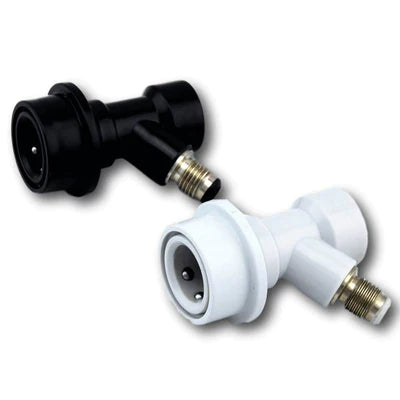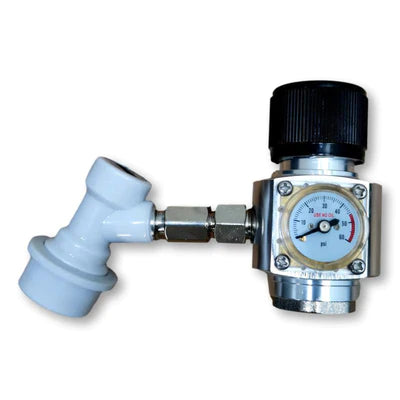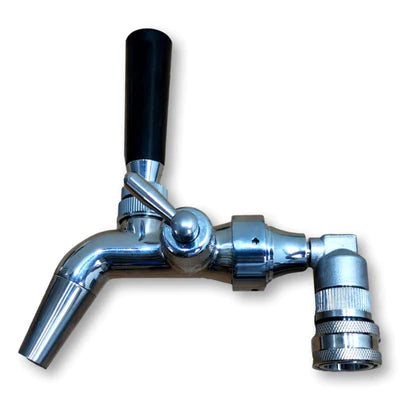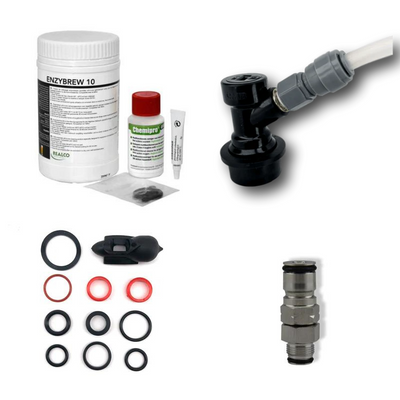Free & Fast Shipping Options In EU
Free & Fast Shipping Options In EU
About
Kegging Gear

Sustainable Homebrewing: Make Environmentally Friendly Beer
February 24, 2019 4 min read
The world of brewing is changing, as craft breweries across the world join global efforts to reduce their carbon footprint. Many craft breweries are now powered by renewable energy, with every effort being made to make brewing a sustainable industry. The days of wasting 7 litres of water for every litre of beer produced are thankfully over; environmentally friendly beer has arrived.
Unfortunately, most homebrewers are lagging behind somewhat. To be fair, this is to be expected, not everyone is able to fit solar panels or filter their own water on site. However, there are a number of things that any homebrewer can try in an effort to reduce their carbon footprint.
Sustainable homebrewing is entirely possible in this day and age and besides the environmental benefits, it can save you a bit of cash too. Check out the following 10 tips and tricks and you’ll soon be making environmentally friendly beer at home! Just remember the golden rule; waste nothing!
Go All Grain
 Most homebrewers will start out using beer kits; hopped wort extract. These offer a great introduction to brewing, but the benefits of all grain brewing far outweigh the ease of use of kits. All grain brewing gives you full control over your ingredients, all of which will be far less processed than kits and extracts.
Most homebrewers will start out using beer kits; hopped wort extract. These offer a great introduction to brewing, but the benefits of all grain brewing far outweigh the ease of use of kits. All grain brewing gives you full control over your ingredients, all of which will be far less processed than kits and extracts.
Buy Local or Grow Your Own
As an all grain brewer, you can ensure you buy local, organic ingredients wherever possible. You can even try growing your own hops and other plants you may wish to use in your brew, such as chilli peppers, mint or other herbs. Growing your own yeast at home is also possible; you can harvest yeast from many craft beer bottles and cultivate it in the fridge — you need never buy yeast again!
Ditch Plastic
Plastic should have no place in sustainable homebrewing. It breaks down quicker than glass or stainless steel, damages easily, needs replacing more frequently, and is difficult to recycle when you’re done with it. Swap plastic fermenting buckets for glass carboys or stainless steel vessels.
Recycle Your Spent Grains

- If you have taken the plunge into all grain brewing, you’ll find you’re left with several kilograms of spent grains each brew day. Rather than throwing these out — to eventually end up in landfill — there are a ton of uses for them. If you can't use them all right away, you can also freeze them for later. Here are just a few ideas to get you started:
- Spent grain bread, cookies and brownies
- Animal feed — cows, pigs and chickens all love spent grains which are packed full of fibre and protein
- Oven baked dog treats — they love them!
- Compost and use in the garden
Re-use Your Yeast
Re-using yeast is a common practice in commercial breweries, with the general consensus being that it improves from batch to batch, up to about 5 or 6 times. It’s easy enough to harvest and wash used yeast, which can be refrigerated until you’re ready to use it again. If you brew regularly, you can even add a new batch directly on top of the yeast cake of a batch you’ve just packaged. As yeast grows, you’ll probably have some left over — this can be used for facial treatments as it’s great for the skin!
Reduce Water Waste
 One of the biggest challenges for homebrewers is managing water waste. When chilling a batch down, whichever method you use — counterflow, immersion or bathtub — you’ll normally need a lot of water to get to pitching temperature. Don’t waste this warm water, instead use it for washing your equipment, fill up your hot liquor tank ready for the next batch, or collect it for animal drinking water or for watering your plants.
One of the biggest challenges for homebrewers is managing water waste. When chilling a batch down, whichever method you use — counterflow, immersion or bathtub — you’ll normally need a lot of water to get to pitching temperature. Don’t waste this warm water, instead use it for washing your equipment, fill up your hot liquor tank ready for the next batch, or collect it for animal drinking water or for watering your plants.
Try the No-Chill Method
Better still, why not skip the chilling step altogether, and give the no-chill method a try. This requires you to have a temperature controlled fermentation chamber, and leaving your batch of beer inside until it drops down and reaches pitching temperature. Popular with Australian brewers, the practice is growing in popularity around the world. No water is used, although energy will be required to power the fermentation chamber.
Harvest Co2 From Fermentation
 Remember the environmentally friendly beer mantra; waste nothing. This can extend to co2, which is produced in large quantities during fermentation, and normally escapes into the air. Oddly enough, many homebrewers will then buy more co2 to carbonate and serve their beer later on! It is possible to harvest the co2 created during fermentation using Mylar balloons, and then use it to carbonate and serve your beer. A typical 23 litre batch will fill around 4 balloons, and one balloon will generally carbonate four 5 litre mini kegs! Alternatively, direct your co2 to a greenhouse and let your plants thrive!
Remember the environmentally friendly beer mantra; waste nothing. This can extend to co2, which is produced in large quantities during fermentation, and normally escapes into the air. Oddly enough, many homebrewers will then buy more co2 to carbonate and serve their beer later on! It is possible to harvest the co2 created during fermentation using Mylar balloons, and then use it to carbonate and serve your beer. A typical 23 litre batch will fill around 4 balloons, and one balloon will generally carbonate four 5 litre mini kegs! Alternatively, direct your co2 to a greenhouse and let your plants thrive!
Clean Green
All brewers know that cleanliness is next to godliness, and keeping your equipment clean and sanitized is essential. Take care in choosing the cleaning agents you use and be sure they won’t have a negative impact on the environment as you wash them out, either down the drain or into the earth. PBW (powdered brewery wash) is widely considered green and clean. Chemical, no rinse sanitizers are fantastic, but if you prefer to keep away from chemicals, try using steam to sanitize with.
Start Kegging
 Cleaning bottles uses a lot of water and cleaning agents. They also produce waste in the form of one use metal caps, although swing-tops are better. By switching to kegs, you save water, cut down on waste and make your life as a brewer easier. You can also use kegs to ferment in, as well as serve your beer, removing the need to wash extra vessels.
Cleaning bottles uses a lot of water and cleaning agents. They also produce waste in the form of one use metal caps, although swing-tops are better. By switching to kegs, you save water, cut down on waste and make your life as a brewer easier. You can also use kegs to ferment in, as well as serve your beer, removing the need to wash extra vessels.
Sustainable homebrewing can be extremely rewarding and save you money. It encourages creativity and innovation, and can lead to amazing, environmentally friendly beer. Just remember, waste nothing and make the most out of everything you have. Cheers!
Subscribe
Sign up to get the latest on sales, new releases and more …







